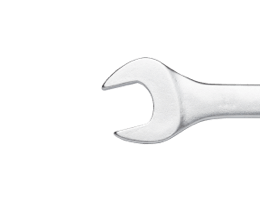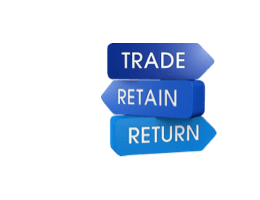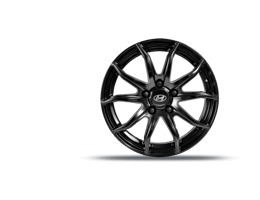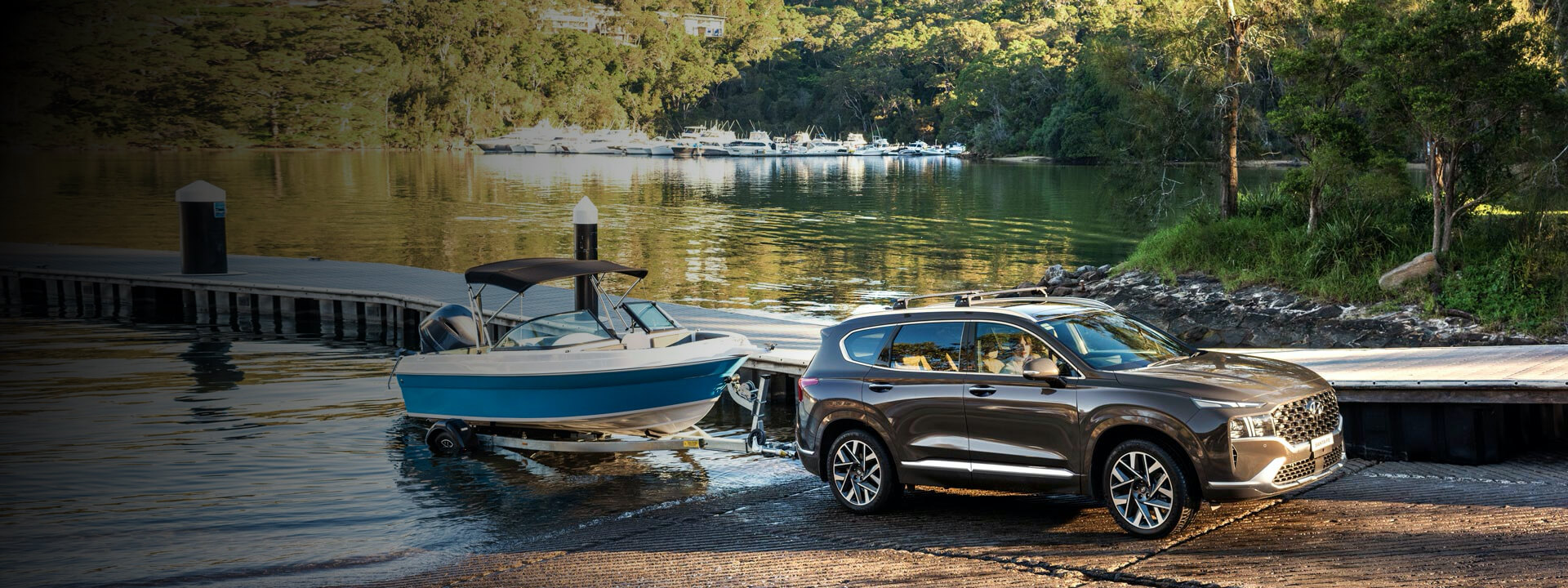Good to tow.
Hyundai has you sorted from head to tow.
There’s nothing like packing up the car and heading for the open road, maybe it’s more about helping a friend move house or maybe its for your day to day work. Whatever the reason, we’ve put together a guide on towing to make sure you and the family get the most out of your vehicle. Everything you need to know can be found right here.
Get the lowdown on towing.
From “What’s my maximum towing capacity?” to “How do I safely tow something?” our quick and simple video will share everything you’ll need to know.
Frequently asked questions.
-
Please check our towing page for the maximum towing capacities for our current Hyundai vehicles or your owner’s manual for your specific model.
-
You will need to purchase towing equipment for your Hyundai vehicle at any Hyundai dealership. Your vehicle will then need to be fitted with the towbar, towball and trailer wiring harness kit by an authorised Hyundai service centre. When fitted by a Hyundai service centre, all Hyundai Genuine Accessories come with a 5-year warranty[A1] for quality assurance.
-
Automatic vehicles will give you greater ability to maneuverer without worrying about changing gears whilst you’re reversing into that tricky spot. But either are perfectly capable of towing your trailer, caravan and so forth.
-
No, you’re good to go if you have a current drivers license. If you have a Learner or Provisional plate license, you can only tow up to 250kg.
-
All trailers have a ‘trailer plate’ that states the maximum loaded mass that trailer can carry. This is also known as the aggregate trailer mass (ATM).
-
How easy something is to tow will depend on the weight of what you are towing, how evenly you distribute this weight and that you have set up whatever you are towing correctly.
You also need to ensure that you know the aggregate trailer mass (ATM) and that it is within the vehicle’s towing capacity.
-
Heavy items should be placed near the centre of the trailer, not at the rear as this could cause the trailer to become unstable.
-
There are two kinds of brakes:
1 - Over-ride braking systems.
The over-ride braking systems are activated when the vehicle starts to slow down and the compression of the coupling by the inertia activates the trailer braking system. The over-ride braking system is generally used when the Gross Trailer Mass (GTM) is up to 2,000kg. If you are required to tow over 2,000kg, you will require braking on all wheels of the towed trailer as well as an automatic breakaway system to be applied.
2 - Electric brake system – these are needed when towing over 2,000kg.
If you are required to tow over 2,000kg you will need to ensure you have an electric braking system fitted. The electric braking system automatically applies the brakes on the trailer at the same time the vehicle brakes are applied. You will also have the ability to adjust and tune the braking force of the trailer using the electric brake controller, this will provide a much smoother and balanced brake.
-
The Gross Combination Mass (GCM) is the maximum combined allowable mass for a towing road vehicle. How this is calculated is by taking into account the combined mass of the passengers and all cargo as well as the trailer and its cargo. The max GCM allowed does vary between models so you should always refer to your owner’s manual to be sure.
-
The Gross Vehicle Mass (GVM) is the maximum operating weight that a vehicle is allowed to tow itself considering the mass of its components, fuel and passengers. This is specified by the vehicle manufacturer and does vary between models. So, again please ensure you check your owner’s manual to ensure you’ve got the right figure before setting out on your journey.
-
Kerb weight is the total weight of a vehicle and it does consider;
- Standard equipment and accessory additions on or within the car,
- Necessary operating consumables (e.g oils and coolant),
- A full tank of fuel. It does not account for the additional mass applied due to passengers or cargo.
-
The axle mass is the maximum loading permissible at each vehicle’s axle and cannot be exceeded in order for the vehicle to remain safe for the road. As this mass varies between vehicles; they are set by the manufacturer and noted within the owner’s manual for easy reference.
-
This is the downward force that is applied to your towball when you hitch the coupling head of your item to your vehicle to be towed. For towing it needs to be within the maximum allowable down ball load found on the label of the tow bar tongue. You can review your owner’s manual for what your vehicle can cope with.
-
Most towballs today are 50mm in diameter however, their size will be stamped on the ball along with its towing capacity in kilograms or tonnes.
-
There are only 2 kinds:
- A standard weight carrying type
- A weight distributing type. This is also known as a ‘hitch receiver’ and assists in leveling out the vehicle when something like a caravan is fitted to ensure proper steering and braking control.
-
Your owner’s manual has a guide to towing included within it. Happy travels!
Want to keep exploring?
Disclaimers.
[H1] Hyundai Genuine Accessory required to be purchased and fitted by authorised Hyundai dealership.



